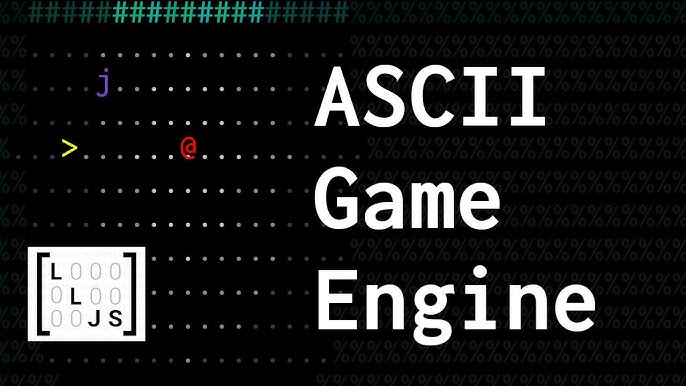ASCII art represents one of the most fascinating intersections of creativity and technology, combining symbols, numbers, and letters into visual form. Long before modern graphical displays existed, programmers and hobbyists used ASCII characters to design banners, illustrations, and diagrams. What began as a necessity in the early computer era quickly transformed into an expressive art form and a technical method of communicating visually using only text.
Over the years, ASCII art has evolved beyond manually created designs. Thanks to automation, ASCII generators now exist to transform text and images into structured ASCII visuals instantly. These generators have become powerful tools, enabling developers, designers, educators, and hobbyists to create lightweight yet visually engaging output across multiple platforms. They serve dual purposes: enhancing documentation or branding with text-based banners, and transforming entire images into ASCII representations.
But this leads to the central question: Can ASCII generators handle both text and images effectively? The answer is yes, but with caveats. Text conversion is straightforward, while image conversion introduces challenges in detail, clarity, and scaling. In this in-depth article, we will explore how ASCII generators function, their applications, benefits, limitations, and modern relevance.
Understanding ASCII Generators
What Is an ASCII Generator?
An ASCII generator is a tool that converts either textual input or images into an ASCII-based representation. These tools automate what early programmers once did manually: arranging characters like @, #, -, and . into recognizable patterns. Generators now come in two main forms: text-to-ASCII and image-to-ASCII converters.
Types of ASCII Generators
ASCII generators fall into two categories:
- Text-to-ASCII: Converts input text into styled banners using predefined ASCII fonts.
- Image-to-ASCII: Processes image pixels and replaces brightness levels with corresponding ASCII characters.
Both types serve distinct needs, but they share the same foundation: transforming data into character-based visuals readable across any text-compatible system.
How ASCII Conversion Works
Text conversion is achieved through predefined ASCII font libraries that substitute letters with stylized patterns. Image conversion, however, analyzes pixel brightness and maps it to character density. For example, dark pixels may appear as @ or #, while light ones are represented by spaces or dots. This algorithmic mapping allows ASCII to approximate shading and outlines.
Converting Text to ASCII
Decorative Banners and Fonts
Text-to-ASCII generators excel at transforming simple text into artistic fonts. For instance, typing “HELLO” into a generator can produce a blocky, stylized banner made entirely of characters. These banners are widely used in terminal programs, documentation, and splash screens.
Readability and Branding
ASCII banners help distinguish important sections of code or documentation. A project may include a large ASCII logo in its README file, instantly grabbing attention and reinforcing branding. For CLI tools, this adds professionalism while remaining lightweight.
Customization Options
Text ASCII generators typically include customization features. Users can select from hundreds of font styles, adjust text size, and even integrate color coding for terminals. This flexibility makes them versatile tools for enhancing the user experience in text-based environments.
Text ASCII Use Cases:
- Command-line tool logos
- Documentation headers
- Fun personalized messages
Converting Images to ASCII
How Image Conversion Works
Image-to-ASCII conversion is more complex than text generation. The process involves scanning an image pixel by pixel, analyzing brightness or grayscale values, and mapping each pixel to a character of matching density. Darker areas use dense symbols (@, M, #), while lighter zones use spaces or dots.
Use Cases for Image ASCII
Image ASCII art can be both practical and artistic. Developers and digital artists often use it to create retro-style visuals, terminal-based wallpapers, or even profile pictures. It’s also used in educational contexts to demonstrate how digital images can be abstracted.
Limitations of Image Conversion
Although impressive, ASCII image conversion has limitations. Fine details are often lost, especially when the output resolution is low. Additionally, converting color images often requires mapping to grayscale or ANSI color codes, which cannot fully capture original vibrancy.
Image ASCII Applications:
- Retro digital artwork
- Terminal splash screens
- Social media posts with ASCII flair
Benefits of ASCII Generators
Lightweight and Compatible
ASCII art is universally compatible. It runs in any environment capable of rendering text, from legacy systems to modern terminals. No graphics libraries or image viewers are necessary.
No Extra Dependencies
ASCII output lives directly in code or documentation. Unlike image assets, ASCII designs do not require additional files or dependencies. This keeps projects clean and reduces the risk of broken image links.
Creative Expression
ASCII banners and images allow developers to express creativity within otherwise plain environments. A custom ASCII logo or Easter egg can make projects fun, distinctive, and memorable.
Key Benefits:
- Works across all platforms
- No image dependencies needed
- Adds personality and branding to projects
Challenges and Limitations
Formatting Consistency
ASCII art depends on monospaced fonts. When displayed in proportional fonts, designs misalign and lose structure. Developers must ensure consistency across editors and terminals.
Readability Concerns
Too much ASCII art can overwhelm readability. Large or complex banners can distract from code clarity, especially in production logs. Minimalism is often the best approach.
Maintenance Effort
ASCII diagrams or logos need updating when project names or structures change. This maintenance overhead, while small, is still a consideration for long-term projects.
Common Issues:
- Misaligned characters in non-monospaced fonts
- Clutter when overused
- Updates required with project changes
Tips for Effective ASCII Conversion
Use Monospaced Fonts
Monospaced fonts ensure that every character takes up the same width, preserving alignment and symmetry in ASCII output.
Keep It Minimal
Overly detailed ASCII art may lose clarity in small terminals or text files. Simplicity improves readability and ensures designs remain effective.
Automate the Process
ASCII generation can be automated using scripts or build tools. This ensures consistency and reduces manual effort when updating banners or diagrams.
Best Practices:
- Test designs across multiple terminals
- Choose appropriate characters for contrast
- Automate updates using generators
Modern Applications of ASCII Generators
Open-Source Projects
Many open-source repositories use ASCII art in README files or CLI banners. This makes projects instantly recognizable and improves community engagement.
Retro-Themed Applications
Indie developers and hobbyists use ASCII art for games, interactive fiction, and nostalgic software. Its old-school aesthetic appeals to fans of early computing.
Education and Learning
ASCII art is an excellent teaching tool. It helps explain pixel-to-character mapping, data visualization, and how computers process images and text.
FAQ’s
Can ASCII generators really convert images accurately?
Yes, ASCII generators can convert images into text-based visuals by mapping pixel brightness to character density. While they can’t perfectly replicate high-resolution images, they create recognizable, lightweight representations suitable for terminals and text environments.
Are ASCII generators free to use?
Many ASCII generators are free and available online. There are also open-source libraries like FIGlet and AAlib that developers can integrate into their projects for programmatic text or image-to-ASCII conversion.
Do ASCII generators support color?
Some ASCII generators support ANSI color codes, allowing them to render colored ASCII art in terminals that support color output. However, most basic generators output black-and-white or grayscale designs for maximum compatibility.
What is the difference between text-to-ASCII and image-to-ASCII generators?
Text-to-ASCII generators turn words into stylized banners using predefined fonts, while image-to-ASCII generators convert entire pictures into ASCII representations, mapping brightness or color to character density.
Where can ASCII art be used in programming projects?
ASCII art can be used in CLI tool splash screens, documentation headers, code section dividers, error logs, educational diagrams, and even fun Easter eggs hidden inside codebases.
Conclusion
ASCII generators can indeed convert both text and images, making them versatile tools for developers, educators, and digital artists. Text-to-ASCII tools create stylish headers, banners, and branding, while image-to-ASCII converters transform photos into creative monochrome art. Despite limitations in detail and color, ASCII art remains lightweight, compatible, and universally accessible. By applying best practices, developers can harness ASCII generators to enhance readability, engage communities, and add personality to modern programming projects.


